The Dianella genus of flowering plants, also known as flax lilies, consists of some truly wonderful and exciting species, many of which are now extremely popular additions to gardens across Australia. These tufted perennial plants are adored by beginners and experts alike thanks to how easy they are to grow and care for.
They are predominantly grown for their attractive strappy foliage, richly hued blue to violet blooms and their shiny decorative purple berries, all of which can add a colourfully charismatic presence to any garden.
Here is your guide to growing and caring for this spectacular genus of flowering plants.
More...
Genus: | Dianella spp. |
|---|---|
Species: | Many available |
Family: | Asphodelaceae |
Subfamily: | Hemerocallidoideae |
Common Names: | Flax lilies |
Location: | Outdoor |
Type: | Flowering plants |
Growth: | 0.5 to 1 metre tall, 0.5 to 2 metres wide (on average) |
Sun requirements: | Full sun to part shade |
Foliage Colour: | Green (most species) |
Flower Colour: | Blue (most species) |
Flowering: | Spring to summer |
Fruit: | Some species produce edible purple berries in late summer |
Maintenance level: | Low |
Poisonous for pets: | Toxic to cats and dogs |
Getting to Know the Dianella Genus
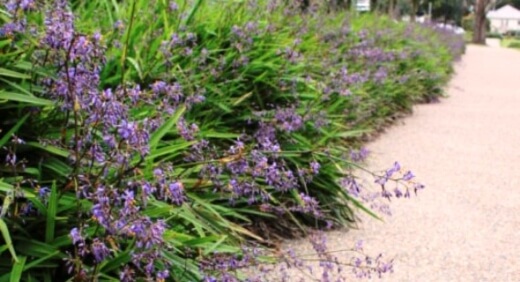
Source: australianplantsonline.com.au
Thanks to their long, linear forms and rhizomatous root systems, Dianella plants can offer growers both decorative and practical applications within their gardens.
Whether for mass plantings, native gardens or filling in difficult spots in your landscape, flax lilies can be relied on to always impress and add luscious textures and colours to natural spaces.
Enjoy an easy-care gardening experience and an abundance of blooms from spring to summer with these fascinating flowering plants.
Dianella is a genus of about 40 species of ornamental plants that are native to Africa, south-east Asia, New Zealand and Australia where roughly half of the species are natives here.
Commonly known as flax lilies, these plants perform best in most climates except in overly cold regions, making them an ideal fit for most Australian gardens.
Flax Lilies Plant Features
Most species grow quite compact to around 0.5 to 1 metre tall and 0.5 to 2 metres wide with a fast-growing nature. The clump-like growth habit can help with erosion and weed control without being invasive.
Thanks to the tufted linear foliage, delicate blue flowers with yellow anthers atop wiry stems and decorative purple fruits, this plant can serve many purposes within gardens.
Here are some common landscaping applications for flax lilies:
- Colourful feature plant
- Mass plantings as features, understories or groundcover
- Decorative container gardening
- Highlight in rockeries - See our guide to rock gardening here.
- Native gardening
- Some species are perfect for coastal gardening
- Attractive edging plants for walls, fences or driveways
- General gap filling in beds
- Bird attracting gardens as fruits are highly desired by avifauna
10 Most Popular Dianella Species
As mentioned, there are about 40 species in this genus but we’ll be looking at our ten most popular and ornamental varieties. Each can offer different habits, heights and foliage colours in the cultivars including green, blueish-green, burgundy, grey, stripped and some even variegated.
Most of our native dianellas are commonly used in garden cultivation globally so we certainly seem to be home to some of the best in the genus.


Get Your Free Guide:
Master Growing Australian Natives eBook
A Must Have Complete Guide for Every Australian Garden
Get Your Free Guide:
Master Growing Australian Natives eBook
A Must Have Complete Guide for Every Australian Garden
Dianella caerulea – Blue Flax Lily/Paroo Lily
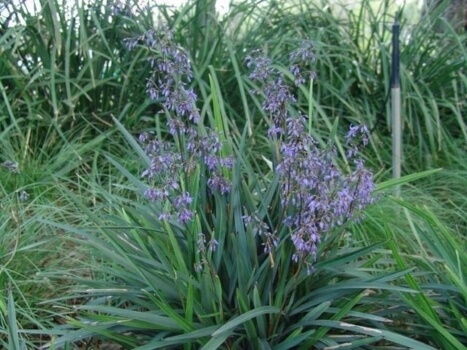
Source: bluedale.com.au
Natively occurring across the eastern states of Australia and Tasmania, Dianella caerulea is one of the most commonly grown. It features strappy bright green blade-like leaves and soft blue flowers from spring to summer followed by indigo-coloured berries.
This variety grows to about a metre tall and wide and it is one of the hardier in the genus, being tolerant to snow, frost and a wide range of growing conditions.
Popular cultivars include:
- Dianella caerulea ‘Little Jess’
- Dianella caerulea ‘King Alfred’
- Dianella caerulea ‘Emerald Fountain’
Dianella revoluta – Black Anther Flax Lily
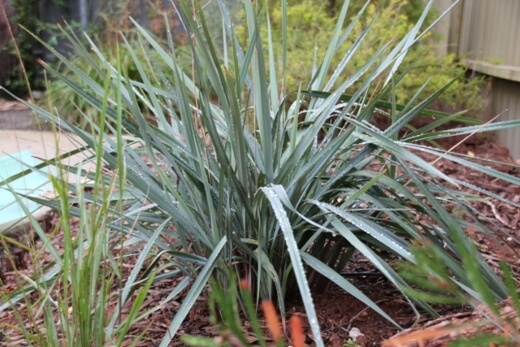
Source: gawlerenvironmentcentre.org.au
Dianella revoluta is endemic to and widespread across Australia so it can grow well in extremely variable conditions. Being another very popular Dianella within gardens, this plant grows to 1 metre tall and 1.5 metres wide.
Its tufted grass-like green foliage is highlighted by eye-catching violet flowers that gently hang from wiry stems from spring to summer.
Thereafter, you can expect brilliantly purple berries to appear that will further encapsulate this plant's all-around stunning presence within landscapes.
Popular cultivars include:
- Dianella revoluta ‘Little Rev’
- Dianella revoluta ‘Prestige’
Dianella tasmanica – Tasman Flax Lily
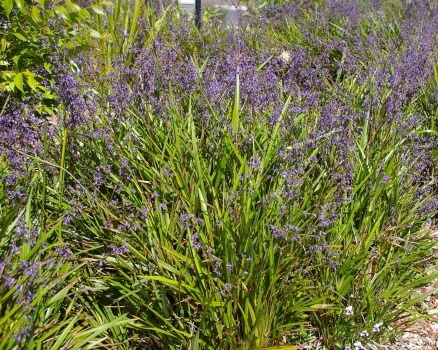
Source: gardensonline.com.au
Found in south-eastern Australia including Tasmania, this variety is another commonly grown species within gardens across the country. It also produces blue blooms followed by violet berries in late summer.
This plant is considered one of the hardier in the genus and it can be grown indoors in brightly lit locations within warmer regions.
The foliage is smooth-green and strappy with an upright form. Perfect for coastal gardens and more shaded gardens, this variety grows to around 2 metres tall and wide.
Popular cultivars include:
- Dianella tasmanica ‘Rainbow’
- Dianella tasmanica ‘Little Devil’
Dianella longifolia – Pale Flax Lily
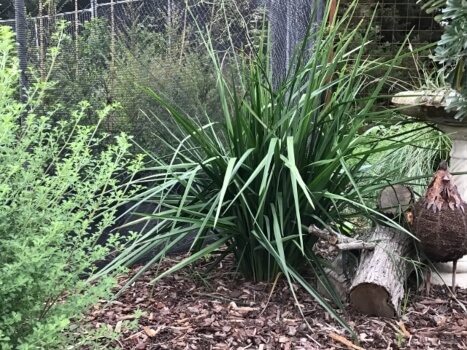
Source: geelongnativeplants.com.au
This variety differs from the others in the genus as it produces thinner grass-like foliage, pale blue blooms with pale yellow anthers and paler blueberries.
Sure, the flowers and fruits aren’t as vibrant but this variety can still look fantastic, especially when planted in masses. The gently arching strappy foliage creates a more relaxed form and this plant is also pretty hardy overall.
It is found in non-arid areas of Australia and it grows to around 1.5 metres tall and wide. The most popular cultivar is Dianella longifolia ‘Forte’.
Dianella brevicaulis – Coast Flax Lily
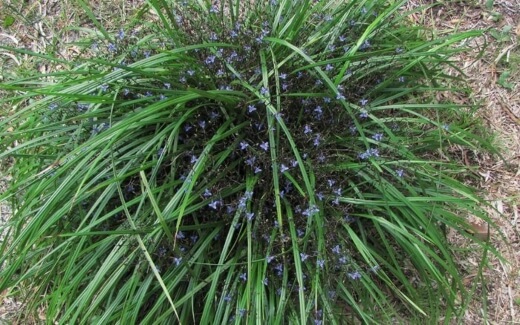
Source: truegreennursery.com.au
With a more reaching form where the foliage is longer and arches to a greater degree, this variety has a featherier appearance than others in the genus.
As its common name suggests, this plant occurs in southern Australia in coastal and subcoastal regions, making it the perfect pick for coastal gardens as it prefers sandy soils.
The soft green foliage forms large clusters that often conceal the flowering stems. It grows to 0.5 metres tall and 1 metre wide.
Dianella nigra – New Zealand Blueberry
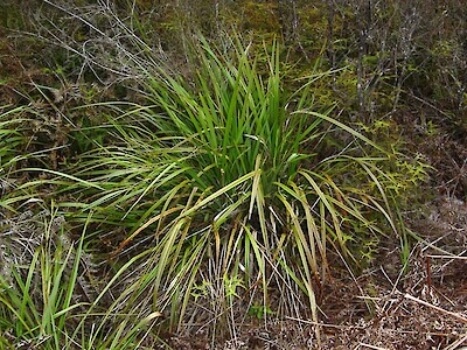
Source: nzpcn.org.nz
Native to, you guessed it, New Zealand, this variety is a small, tussock-forming evergreen that grows to only around 50cm tall and 30cm wide. It produces delicate white flowers followed by violet berries that sit atop lush bright-green strappy foliage.
This variety is perfect for container gardening thanks to its petite size and it will also look fantastic planted under existing natives and in mixed planting sites.
Dianella brevipedunculata
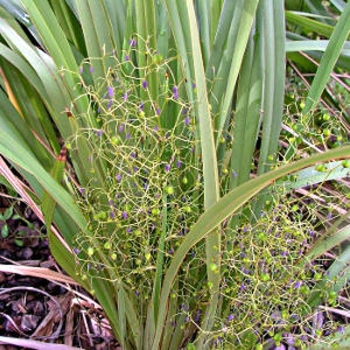
Source: plantmark.com.au
This variety is another small-growing pick in the genus. With an attractive and compact clumping growth habit, this plant also produces sprays of blueish-purple blooms followed by decorative purple berries.
It is perfect in rockeries, mass plantings or as an edging plant for borders in landscapes. It grows to a neat 50cm tall and wide and it is more cold tolerant than the others in its genus.
This native is another great option for those wishing to establish colourful container gardens.
Dianella amoena – Matted Flax Lily
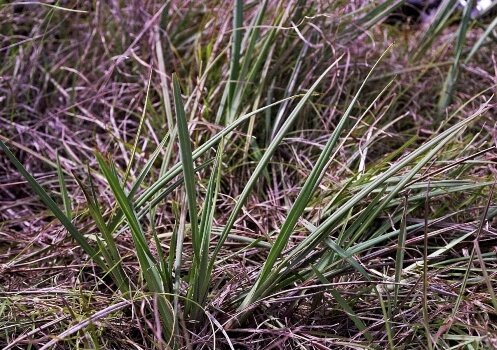
Source: yarraranges.vic.gov.au
This species is considered endangered in many parts of Australia. It has long grey-green foliage that grows in clumps from its extensive underground rhizome system.
The common name refers to this extensive rhizomatous nature as this plant can quickly form large mats on beds up to 5 metres wide.
The leaves are very slender and the plant displays blueish-purple flowers much like its relatives. This variety grows to around 90cm tall and wide.
Dianella congesta

Source: apps.lucidcentral.org
This lesser-known variety is very similar to the revoluta species but it grows smaller. It has a very tufted and upright habit with drooping leaves, making it an ideal fit in rockeries, cottage gardens or as a seaside plant.
It grows to about 50cm tall and wide so it can also be grown in pots quite easily. It produces dark blue flowers for most of the year and bright purple berries once conditions are optimal.
Dianella ensifolia – Umbrella Dracaena/Common Dianella
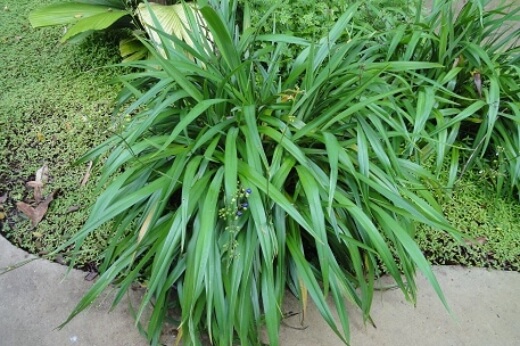
Source: natureloveyou.sg
This species is more widespread globally, being native to many regions including but not limited to China, India, Madagascar, Singapore and tropical Asia. It naturally occurs in grasslands or rainforests as lush ground cover.
The bright-green leathery leaves are pointed and tapered at both ends and its flowers have white petals with orangey-yellow anthers. It also produces deep blue berries and it grows to around 2 metres tall and wide.
Due to its large clumping and upright form, this species is a fantastic addition to larger gardens where when planted in masses, will create impressive colourful displays almost year-round.
Regardless of which species to choose to establish, you can be assured that it will offer an equally ornamental and colourful presence in your garden.
Some may be harder to come by than others but the great news is these plants are easily propagated so you can grow as many as you need to fill your natural spaces over time.
While some species may require a little more shade or moisture, generally, all the Dianella species will require very similar growing conditions and care requirements so this guide can be referenced for either species for the most part.
Which Dianella Species Produce Edible Fruits?
There are only a few species that are considered bush tuckers that produce fruits safe for human consumption. Reports on the berries range from highly poisonous to edible sweet and nutty fruits so knowing which are safe is important.
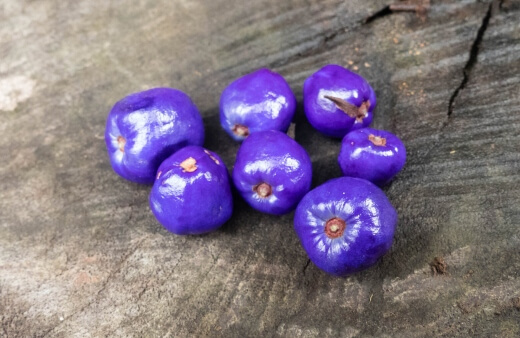
It is always best to exercise some caution when dealing with native fruits so limiting intake in any regard is best.
Species that produce tasty edible fruits include:
- D. caerulea
- D. revoluta
- D. congesta
- D. longifolia
Known toxic species include:
- D. tasmanica
- D. intermedia
- D. nigra
- There could be other species mentioned that are toxic so it would be safer to only consume berries from the species that are known to be safe, listed above.
How to Use Dianella Berries
- Ripe Dianella berries can be eaten raw or cooked into sweet or savoury dishes and other condiments like jams, jellies and marinades.
- Ripe berries will be soft and can be picked straight from the plants, rinsed and then used or stored as needed.
- Dianella berries can be refrigerated for up to 2 weeks and frozen for up to 2 years.
How to Grow Dianella in Australia
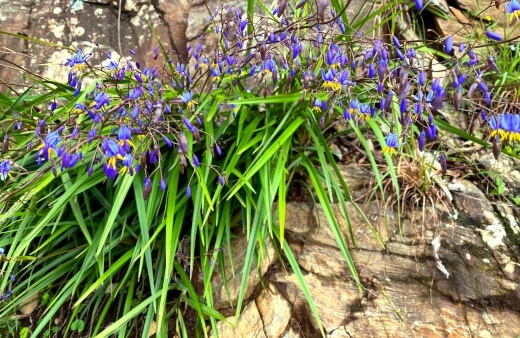
Flax lilies are quite easily propagated which is fantastic for those looking to grow their collection from home. These plants can be grown from ripe seeds collected from fruits or the rhizomes can be divided to create new plants.
Alternatively, young and healthy plants are readily available from local nurseries or online retailers that can be quickly transplanted and established in your garden.
Ways to Propagate Flax Lilies
Growing Flax Lilies from Seed
Seeds should be ready for harvest when the berries have softened and turned fully blue from green. Once the berries feel squishy, you’ll know the seeds are ready. This is usually around late summer to early autumn.
Each berry will have 3 to 4 hard black seeds which you can extract and use. Seeds can be started in cooler conditions.
- Once you have your seed trays or propagation containers prepared with a quality seed-raising mix or potting mix, you can gently sow the seeds on the top of the mix, being careful not to cover them. You can lightly dust some mix onto them.
- Water lightly after sowing and place the seeds in a warm and sheltered location away from bright direct light and cold drafts. Some humidity is also recommended.
- Water only when the soil starts drying out to avoid seed rot.
- Germination should be fast. Seeds usually strike in only a few weeks.
- Allow seedlings to develop in the coming months, watering as needed before translating them into larger containers or the garden.
Dianella Propagation by Division of Rhizomes
Large clumps of established plants can be gently dug up and trimmed by dividing congested plants to make new ones. It is best to divide in autumn so the new plants can establish themselves in less hostile, cooler, shadier conditions.
- Using a sharp shade or shovel, gently dig up the parent plant to expose the rhizomes.
- Swiftly and precisely cut into the rhizomes to divide the plant into 2 to 4 clumps depending on its current size.
- Dig some compost or other organic materials into your planting hole then gently place the newly divided plants into their respective holes.
- Once snug in the hole, gently backfill with soil and water lightly.
- Keep the soil lightly moist while the plants establish new roots and growth.
Best Conditions for Planting Dianella
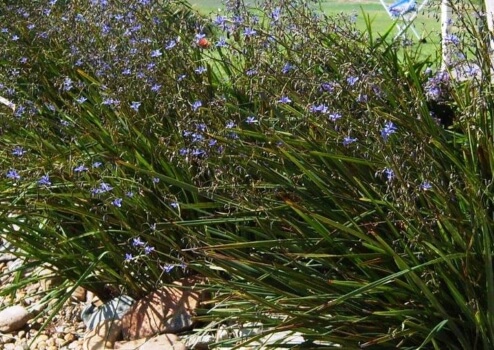
Source: plantmark.com.au
While these plants can tolerate a wide range of growing conditions, for the most part, there are certainly some basic requirements needed to ensure healthy growth and prolific flowering and fruiting for both garden beds and outdoor container growing.
Ideal Lighting
For most dianellas, full to part shade will be best. Some species can tolerate full shade but fruiting and flowering will almost always be diminished in these conditions.
Flax Lilies Soil Requirements
Flax lilies need rich, fertile soils that are well-draining. This is why heavy clay soils should be avoided. You can always boost your soil if you’re concerned by mixing in some gypsum and compost to create healthier soil.
While many flax lilies can grow in poor soils, they do tend to prefer soils enriched with organic materials before planting takes place. Be sure to enrich your soil annually to bi-annually to maintain good nutrient value and drainage.
How to Care for Flax Lily
Once established, flax lilies will be drought and cold-tolerant, requiring only basic care to thrive.
Watering Needs
These plants need to be watered well after planting and during initial development. Once established after about a year, they will require little water to thrive where natural rainfall should be sufficient.
Mulching
It is best to mulch well after planting and in summer to help retain moisture. Mulch around the base of your plant with an organic mulch, being careful not to mulch too close to the stems and foliage.
Best Fertilisers for Flax Lilies
Fertilise each spring with manure, compost or an organic pelletised fertiliser for the garden. Some native blend fertilisers can also work great.
Be sure to spray any pellets off the foliage after feeding to avoid foliage burn. The water will also help the fertiliser to reach the rhizomes properly.
Pruning Dianella Plant
Prune to remove old flower spikes from the base of the plant once the berries are finished in late autumn. Be sure to also remove any dead or yellowing leaves to ensure ideal air circulation is maintained which will help to avoid mould and disease.
Dianella Pests & Diseases
Though pretty hardy, these plants can still suffer from some issues when grown in gardens.
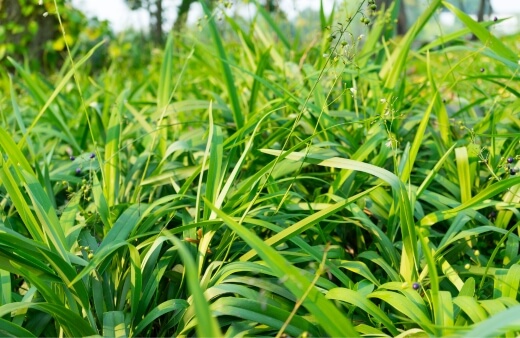
Mealybugs
These sap-sucking insects can attack your plants, especially if they’ve been overwatered and moisture levels are too high. They appear as small white or light grey insects with purplish innards and a cotton-like waxy coating.
Treat with an organic neem oil spray or insecticidal spray to reduce infestations.
Mites and Aphids
These smaller pests shouldn’t cause too much damage but you’ll want to get rid of them nonetheless. They appear as small reddish-brown little specks on the undersides of leaves and around the roots. An organic neem oil spray or insecticidal spray should clear them swiftly.
Scale
These covert sap-sucking critters appear as small, circular bumps that look almost like a part of plants. They vary in colour from brown to cottony-white and usually attack stems and leaves. They can be controlled with sprays of horticultural oil or a homemade mixture of dish soap and water.
For any pests, be sure to always remove infested foliage as needed to avoid unnecessary spread.
Flax Lily Rust
This rare fungal disease normally only affects flax lilies grown in more coastal regions. It appears as an orangey rusty residue on leaves and stems. To treat Flax lily rust, cut down your plant to about 15cm above the ground and apply a copper-based fungicidal spray.
Other Flax Lily Problems
Wet Feet
Dianella plants are very susceptible to wet feet which can lead to severe damage. In most climates, they can survive on rainfall alone so overwatering should be avoided at all costs.
This is why it’s also important to ensure your soil has adequate drainage at all times. If your planting location is too damp, consider mounding up the soil to create a raised bed and add coarser materials to increase drainage.
Find out more about the benefits of using raised garden beds and see our reviews of the best raised beds for 2024.
Yellowing Leaves
This should indicate that you are adding too much fertiliser to the soil. Prune away damaged foliage and fertilise less frequently. Be sure to also always water in fertiliser and spray off any foliage that may have been exposed to the fertiliser.
Dianella Frequently Asked Questions
Why is my Dianella turning brown?
This can often be caused by freezing temperatures or, under or overwatering. If you experience long stretches of freezing temperatures, perhaps consider protecting your plants with a cover to avoid this.
Are dianellas invasive?
Though their underground rhizomes can grow quite extensively, they are not considered invasive in any way within landscapes. On the contrary, the rhizomes help with soil erosion and weed control.
How often do you water flax lilies?
These plants are very tolerant to drought so waterings need to be spaced out properly to avoid wet feet. It is recommended to only water when the soil is dry to a depth of 2.5 to 5 centimetres.
Will flax lilies survive a freeze?
The plants will die back after a hard freeze. Simply cut the leaves off at the base and the plant should resprout as the warmer temperatures return.
If you’re interested in establishing some other incredible native flowers in your garden, be sure to have a look at our extensive guide below for more information:
Decorate Your Natural Spaces with the Dazzling Dianella Plants
It’s easy to see why these gorgeous natives have become such staples within gardens across the country. With their tufted grassy green foliage, brilliantly blue flowers embellished with yellow anthers and highly decorative purple berries, these plants are the perfect wow factor for anyone looking for more colour in their landscapes.
Being accessible to all growers and easily integrating themselves into any garden setting, flax lilies are an excellent choice for almost any Australian yard.
Thanks to their ease of propagation, these plants are also a wise choice for those who are interested in expanding their collections from home. With so many stunning and exciting varieties to choose from, you’re bound to find the perfect Dianella for your gardening needs.
Published on October 2, 2022 by Nathan Schwartz
Last Updated on January 21, 2025




